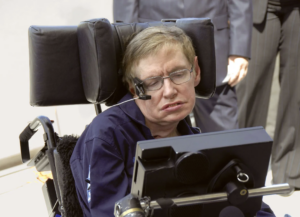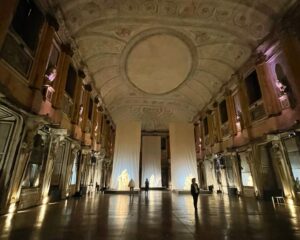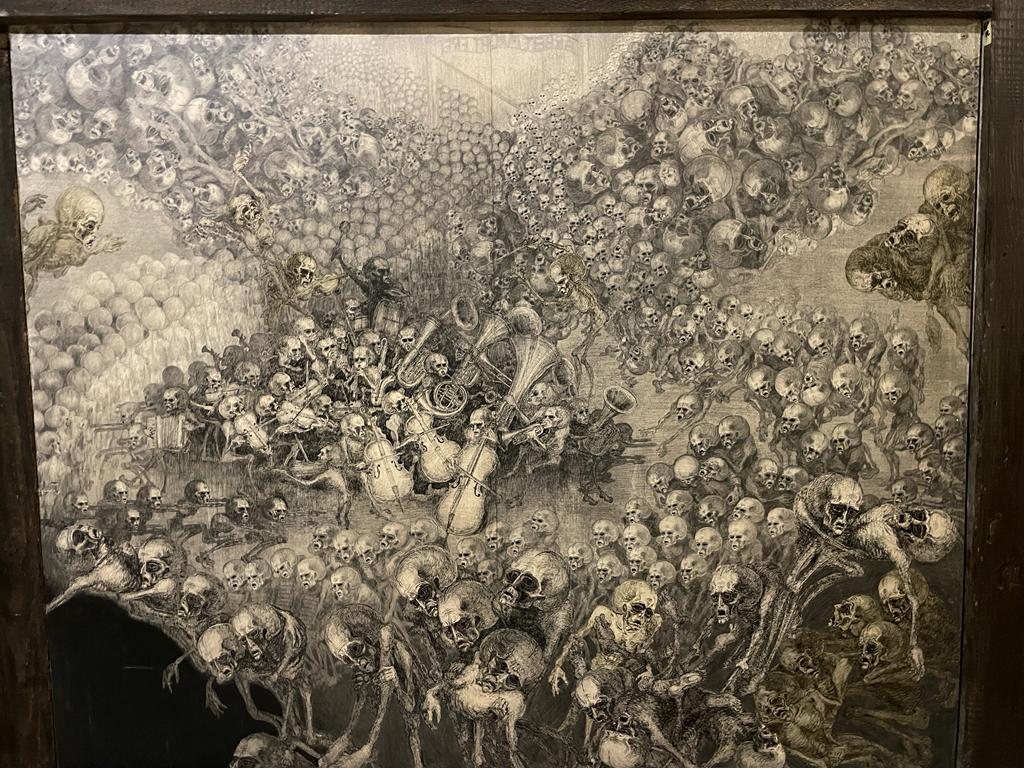
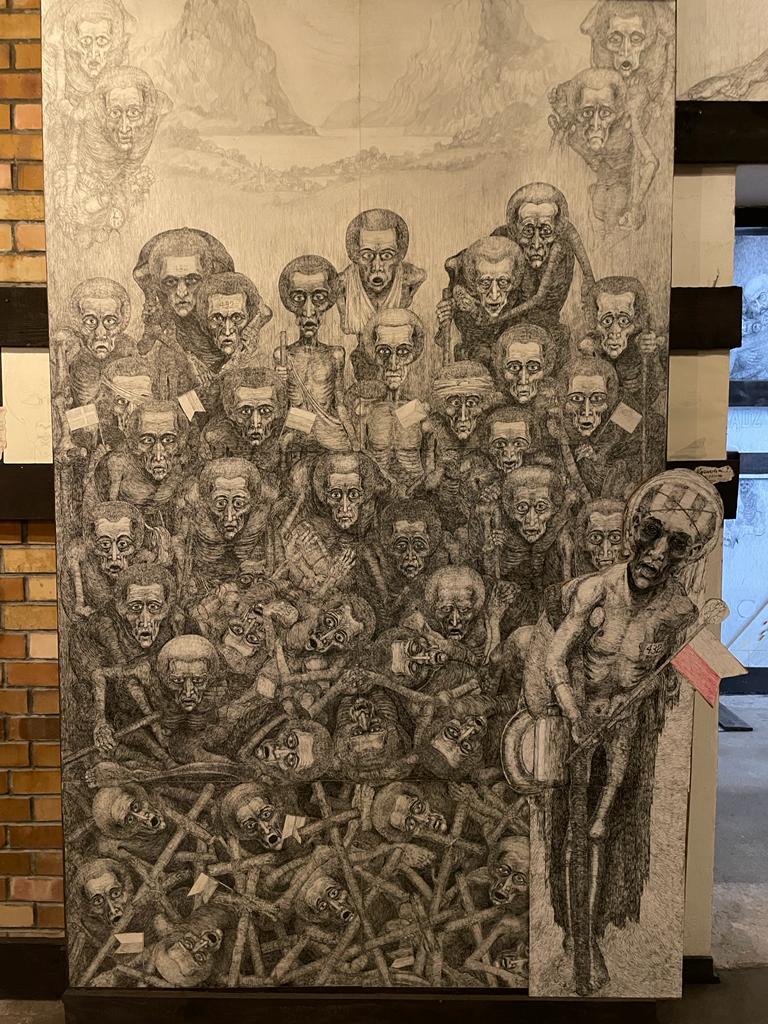
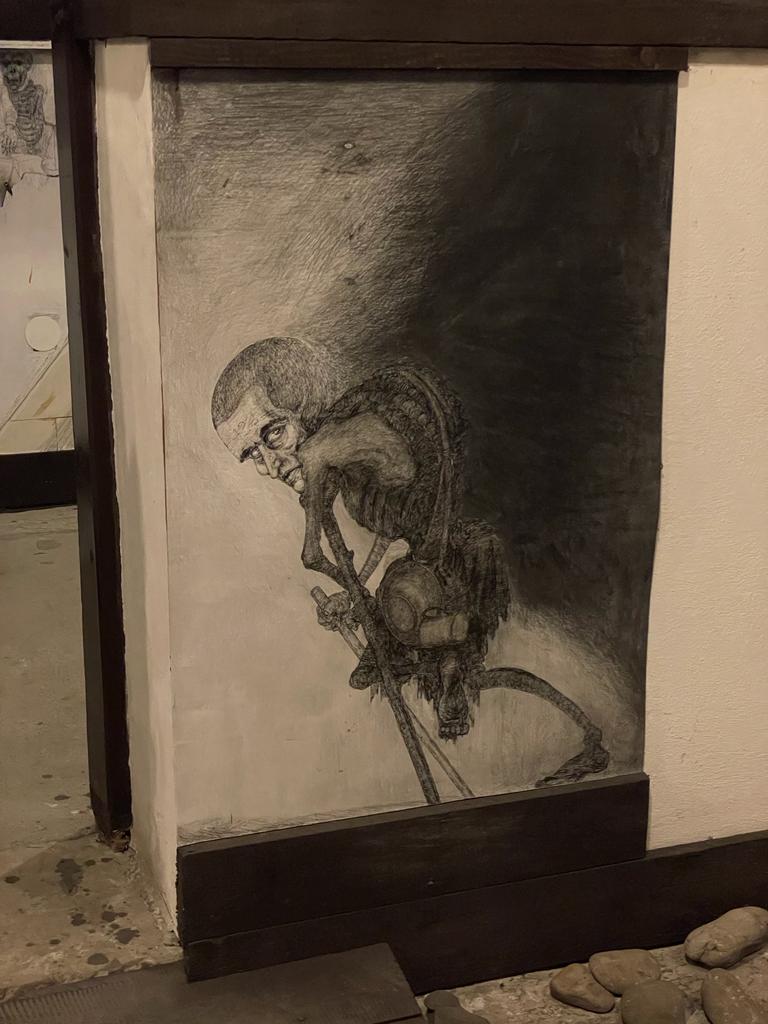
Marian Kolodziej’s work of art that can represent the dehumanization that happened at Auschwitz concentration camp is the series of paintings called The Labyrinth. Recently, I went to Krakow, Poland, and discovered the horrible stories of the suffering of the people who were victimized and murdered massively in the concentration camp. At the end of the tour, the guide brought us to the gallery of Marian Kolodziej paintings on the lower level of the Church of the Birkenau. Through this essay, I will discuss how his arts challenge the traditional definition of art by Paul Klee. Furthermore, it will examine the qualities that make me decide that his art is my favorite art by looking at his background and perspective on the horrifying experiences of surviving death.
Marian Kolodziej was a member of one of Auschwitz’s initial shipments. He lived, never speaking about his ordeal for the next 50 years. Following a significant stroke in 1993 and getting paralyzed on the right side of his body, he began his recuperation by creating pen and ink paintings reflecting his and other prisoners’ suffering in the death camps (Auschwitz.org, 2013). After escaping the concentration camp and returning to Poland, he enrolled in the Institute of Artwork at the Academy of Fine Arts in Kraków, where he completed his degree in 1950 with a specialty in scenography (Auschwitz.org, 2013). He obtained a job as a production designer at the “Wybrzee” theatre in Gdansk to further his creative career (Auschwitz.org, 2013). He has worked with other theaters both in the United States and overseas, including on motion pictures (Auschwitz.org, 2013).
The visual qualities that make the piece of art my favorite were evident from its line, color, space, and meaning of the painting. He repeated the number 432 when he painted his figurative personification as it was his prisoner code when he was a captive during one of those trips to Auschwitz. He starts to relate his horrible experiences with dramatic lines and ink drawings. While going through his art, I was taken on a tour of Kolodziej’s artwork and the circumstances he and other prisoners experienced. For me, he was a one-of-a-kind account from a Polish Catholic concentration camp survivor and painter. The most painful one was the painting, where he told a story about when he carried his best friend’s body from the gas chamber. I cried when I saw his drawings, as he effectively communicated his and other prisoners’ pains. He utilized his designs to depict the atrocities of Auschwitz and the political sphere, which bears witness to pain and misery and guy’s dehumanization of the person (Passion River Films, 2014).
This art can challenge the traditional definitions of art by Paul Klee, who defined that “art does not reproduce the visible; rather, it makes visible” (The Art Assignment, 2020). Consider Kolodziej made sure that while he was trying to shape the reality that he faced in the concentration camp into some enlightenments toward liberation that he longed to have for the rest of his life. The painting, which he thought was the last piece of his effort to find freedom from the traumatization, was finally deemed as his realization that the answer that would liberate him from his experience was merely death. Hence, he was on the same note as Bertold Brecht, who believed that “art is not a mirror held up to reality, but a hammer with which to shape it” (The Art Assignment, 2020). Kolodziej mentioned that his paintings “is not an exhibit, nor art, nor images, but words contained in designs” (Passion River Films, 2014).
In conclusion, Marian Kolodziej successfully represented his words and story through these paintings. Simultaneously, he also found a purpose in the last years of his life. In the process, he also discovered the inner liberation he longed for. Through his artworks, he also educated the viewers of his arts about the cruelest dehumanization act implemented by the Nazis to raise awareness and never let the same thing happen again in the future.
References:
Auschwitz.org. (2013, October 9). 432. Marian koldziej. Magister vitae – educational session. http://www.auschwitz.org/en/museum/news/432-marian-kolodziej-magister-vitae-educational-session,1047.html
Passion River Films. (2014, March 15). Passion river film official trailer – the labyrinth [Video]. YouTube. https://www.youtube.com/watch?v=OnKT-KlnbbE
The Art Assignment. (2020, July 23). The Definition of Art [Video]. YouTube. https://www.youtube.com/watch?v=b2VpNx5ZxSA

